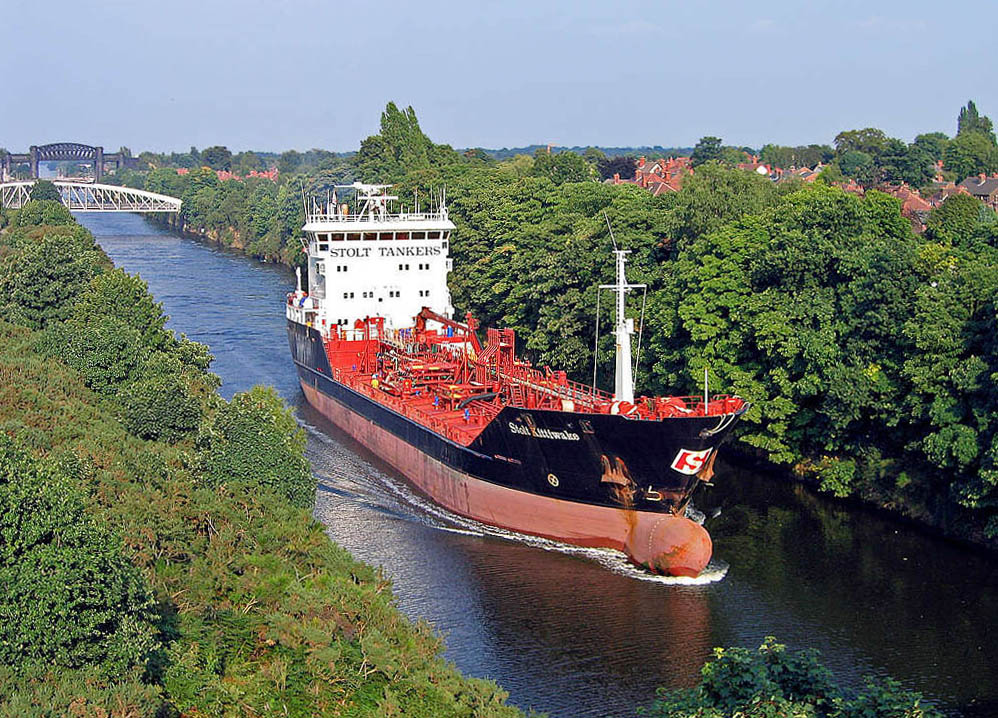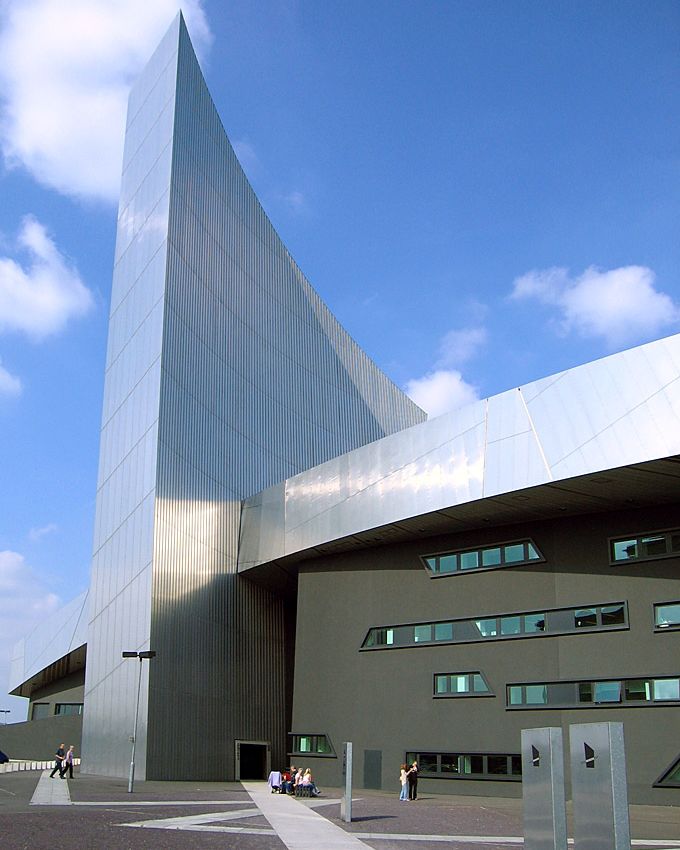
Wikimedia Commons
Salford Quays is an area of Salford, Greater Manchester, England at the terminus of the Manchester Ship Canal
36-mile-long (58 km) inland waterway in the North West of England linking Manchester to the Irish Sea.
36-mile-long (58 km) inland waterway in the North West of England linking Manchester to the Irish Sea.. The area was previously part of Manchester Docks, which was made up of Pomona Docks[a]Pomona is the Roman goddess of fruit trees.[1] – now largely abandoned – and the larger Salford Docks, both built by the Manchester Ship Canal Company. The docks were opened in 1894 by Queen Victoria,[2] and occupied 120 acres (49 ha) of water and 1000 acres (405 ha) of land.[3] At their height, the docks made Manchester the third busiest port in Britain, but after the introduction of large container ships too big to navigate the canal,[3] they were closed in 1982, resulting in the loss of 3000 jobs.[2] Salford Docks, now known as Salford Quays, subsequently became one of the largest urban regeneration projects in the United Kingdom.[3]
Landmarks
Imperial War Museum North
Main article: Imperial War Museum NorthMuseum in the Metropolitan Borough of Trafford in Greater Manchester, England. One of five branches of the Imperial War Museum, it explores the impact of modern conflicts on people and society.
Designed by the Berlin-based architect Daniel Libeskind, and opened in July 2002, the Imperial War Museum North is one of the five branches of the Imperial War Museum. The building represents an interlocking of three fragments of a globe smashed apart and reassembled: earth, air and water, each forming a functionally distinct part of the museum.[4]
The museum occupies the site where the Hovis Grain Silos once stood, before being destroyed by bombing during the Second World War.[5]

